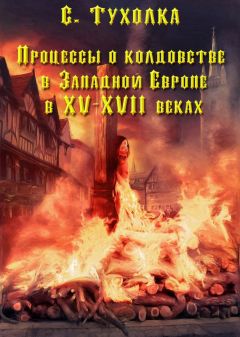class="p">1157
"For hee would attend you in such prety formes of dog, cat, or Rat, that they should neither be terrified, nor any body else suspicious of the matter. Upon this they agree, and (as it should seeme) give away their soûles for the service of such spirits, as he had promised them; which filthy conditions were ratified with abhominable kisses, and an odious sacrifice of blood, not leaving out certaine charmes and conjuartions with which the Divell deceived them, as though nothing could bee done without ceremony, and a solemnity of orderly ratification" (Anon. The Wonderful Discovery of the Witchcrafts of Margaret and Phillip Flower. P. 287).
В данном случае в трагедии д'Обиньяка была допущена историческая неточность. В 1431 г. в Руане находился Ричард Невилл, пятый граф Солсбери (ок. 1400–1460), прибывший в Нормандию с королем Генрихом VI. Графом Уорик стал старший сын графа, также носивший имя Ричард Невилл (1428–1471), — шестой граф Солсбери, кавалер Ордена Подвязки и одна из ключевых фигур Войны Алой и Белой Роз, заслуживший прозвище «Делатель королей» как человек, сыгравший важную роль в свержении сразу двух правителей — Генриха VI Ланкастера, а затем Эдуарда IV Йорка. Подробнее см.: Браун Е.Д. «Он создавал королей и свергал королей в свое удовольствие». Всемогущий Ричард Уорик // Казус. Индивидуальное и уникальное в истории — 2019 / Под ред. О.И. Тогоевой и И.Н. Данилевского. Вып. 14. М., 2019. С. 31–45.
"...il rïy a que les ames basse capables de ces visions chimériques; pour moy je rïay rien veu, et ne croyez pas que j'invente des fantasmes contre une fille que j'estime innocente" (Aubignac F. H. d' Op. cit. P. 21). См. также: Ibid. P. 24–25, 39.
"Que n'avez-vous instruict de vos Satellites pour soustenir qu'ils m'ont veuе souvent au milieu des tenebres, courir toute eschevelée, et sans ceinture, foüiller dans les sepultures des morts, couper en murmurant des herbes empoisonnées, chercher des serpens sous les ruines des vieux Palais, obscurir le tein de la lune, et mettre toute la nature dans le trouble et l'effroy? Au moins devriez-vous dire qu'estant bergere, j'ay fait mourir les troupeaux de mes voisins, et qu'étant gueriere je n'ay vaincu que par des terreurs Paniques suscitées par enchantement?" (Ibid. P. 105–106).
См., к примеру: Bodin J. De la démonomanie des sorciers. Fol. 76v, 153; Blendecq Ch. Cinq histories admirables, esquelles est monstré comme miraculeusement par la vertu et puissance du S. Sacrement de l'Autel, a esté chassé Beelzebub Prince des diables. P., 1582. Fol. 12v, 48, 50, 64v, 66v, 80; Relation de M. Hédelin, sieur d'Aubignac, touchant les possédées de Loudun au mois de septembre 1637 // Possession et sorcellerie au XVIIe siècle / Ed. par R. Mandrou. P, 1979. P. 144–194. Подробнее о внешности одержимых, какой ее представляли французы XVI–XVII вв., см.: Тогоева О.И. «Мужская» и «женская» одержимость в сочинениях французских демонологов; Она же. «Все это мошенничество, обман, мерзость и профанация»; Она же. Почему французские дети иногда плюются едой? Случай одержимости Лорана Буассонне (Франция, 1582 г.) // Адам и Ева. Альманах гендерной истории. 2018. Вып. 26. С. 25–40.
"Car combien que celuy qui n'appelle, et n'invoque le malin esprit… ne soit pas du tout si méchant que celuy qui l'appelle, et le prie, et le reçoit. Si est ce que l'un et l'autre est digne de mort, et l'un et l'autre est vray Sorcier. Et non pas celuy qui n'a poinct invoqué, ny appellé le Diable: ains qui est possédé, et assiégé par iceluy" (Bodin J. De la démonomanie des sorciers. Fol. 75v).
Scot R. Op. cit. P. 513; James I, King of England. Op. cit. P. 29–30. Долгое время считалось, что в 1603 г., взойдя на английский престол, Яков Стюарт распорядился сжечь все доступные экземпляры «Разоблачения колдовства» Реджинальда Скота: Estes L.L. Reginald Scot and His "Discoverie of Witchcraft". Religion and Science in the Opposition to the European Witch Craze // Church History. 1983. Vol. 52 (4). P. 444–456; Almond Ph. C. King James I and the burning of Reginald Scot's "The Discoverie of Witchcraft": The invention of a tradition // Notes and Queries. 2009. Vol. 56 (2). P. 209–213; Idem. England's First Demonologist: Reginald Scot and "The Discoverie of Witchcraft". L.; N.Y., 2011. P. 13–21.
Справедливости ради, стоит заметить, что не один лишь Реджинальд Скот сомневался в существовании колдовства или, по крайней мере, в непосредственной связи между внешностью женщины и ее склонностью к занятиям магическими практиками. В конце XVII в. эту зависимость категорически отверг еще один английский демонолог Ричард Бовет (1641-?), настаивавший, что уродство не следует считать доказательством связи человека с дьяволом и нужно искать более надежные доказательства вины. Настоящие ведьмы, писал он далее, — такие, как Иезавель, Жанна д'Арк и Джованна I Неаполитанская — имели «красивые лица», под которыми они умело скрывали свои черные помыслы: "Tho I must confess that there is no reason that any person (by reason of those deformities which may be only the Effects of old Age, or the product of some disease) should be presently Indicted and trust up for a Witch; nor can I Imagine that ever such a thing hath been in a Civilized Nation, without the concomitant circumstances of some other proofs: That would be a hard case indeed!… For we have no account of any very Nauseous deformity that sate on the forehead of Jesabel, Joan of Arc, or Joan Queen of Naples. And perhaps the Attempts of these Hellish Agents may pass with less Suspicion, when under the plausible disguise of a hansom Face" (Bovet R. Pandaemonium, or, The devil's cloyster. L., 1684. P. 82).
Шекспир В. Сонет 93 // Шекспир В. Полное собрание сочинений в 14 т. Т. 14. С. 250 (перевод С. Маршака). В оригинале эти строки звучали так: "In many's looks, the false





